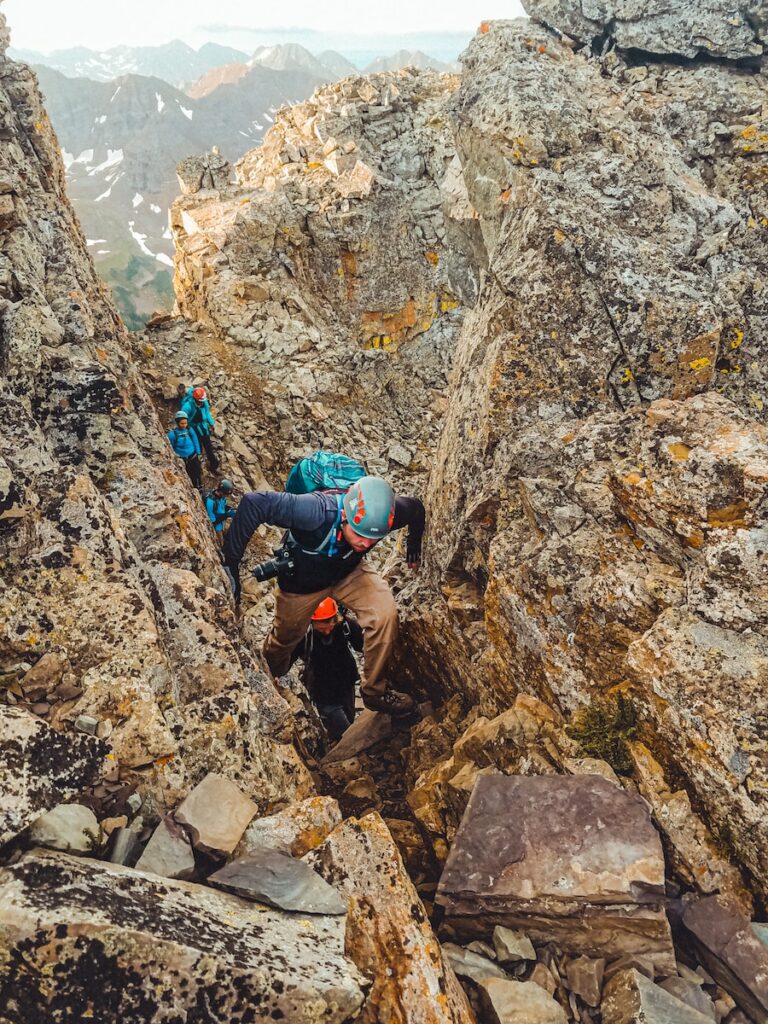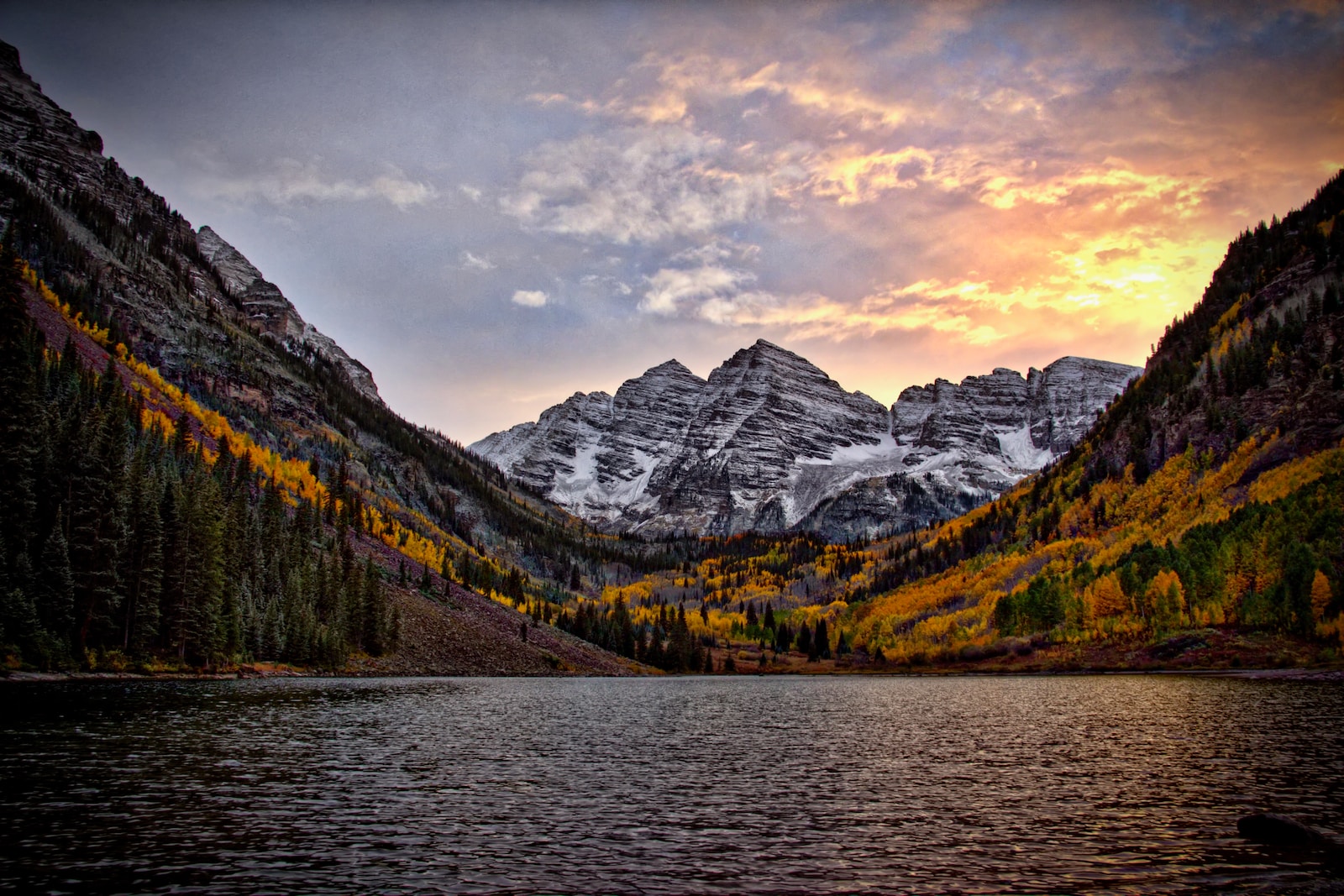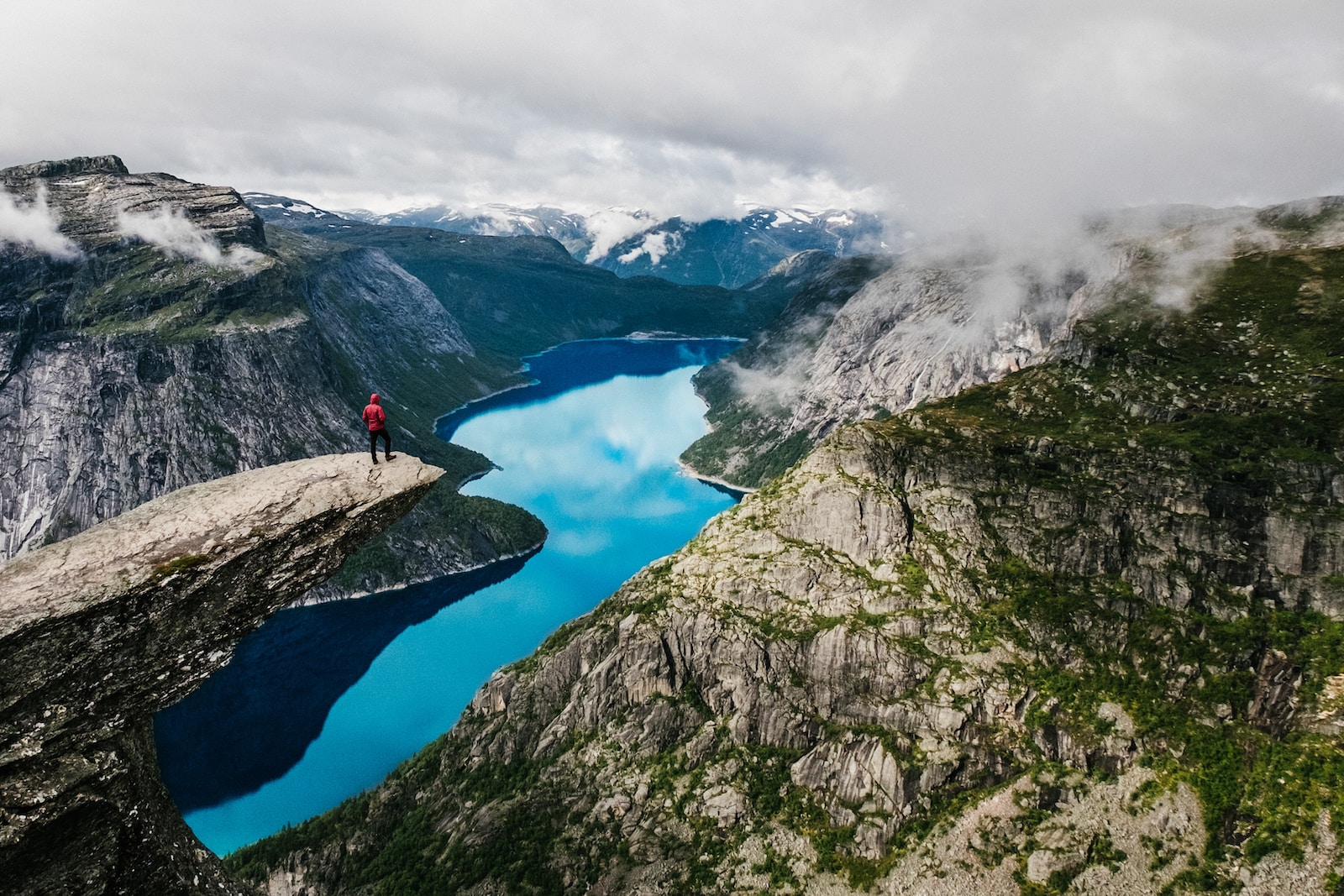Welcome to my blog, where you will discover the secrets to mastering the Maroon Bells through the lens of your camera. If you’re a nature enthusiast and passionate about landscape photography, this tutorial is for you. Join me as we uncover the breathtaking beauty of the Maroon Bells in the USA and learn about the perfect time, location, and camera settings to capture these natural American landmarks in all their glory.
Table of Contents
- The Enchanting Maroon Bells
- Essential Camera Gear
- Composition Techniques
- A How-To Guide: Mastering the Maroon Bells
- Frequently Asked Questions
- 1. What are the Maroon Bells?
- 2. Where are the Maroon Bells located?
- 3. Can I visit the Maroon Bells all year round?
- 4. When is the best time to photograph the Maroon Bells?
- 5. Where is the best location to photograph the Maroon Bells?
- 6. What camera settings are ideal for capturing the Maroon Bells?
- 7. Are there any photography restrictions at the Maroon Bells?
- 8. Are there any other attractions or activities near the Maroon Bells?
- Wrap Up
The Enchanting Maroon Bells
The Maroon Bells are two stunning peaks located in the Elk Mountains of Colorado, USA. These peaks, Maroon Peak and North Maroon Peak, are some of the most iconic and photogenic mountains in the United States due to their distinctive maroon-colored rock and their reflection in Maroon Lake, which lies at their base.
Maroon Peak is the taller of the two, reaching an elevation of 14,163 feet (4,317 meters), while North Maroon Peak stands at 14,019 feet (4,273 meters). The Maroon Bells are part of the White River National Forest and are situated near the town of Aspen, Colorado.
The Maroon Bells are a popular destination for outdoor enthusiasts, hikers, photographers, and nature lovers. The area offers numerous hiking trails, including the Maroon Lake Scenic Trail, which provides a relatively easy way to take in the stunning views of the peaks and the lake. Due to their popularity and the need to protect the fragile environment, there are restrictions on vehicular access to the Maroon Bells during the peak tourist season, and visitors are encouraged to use shuttle buses. The Maroon Bells are particularly beautiful in the fall when the aspen trees in the area turn vibrant shades of yellow and orange.
The Perfect Time of Year
While the Maroon Bells are truly captivating in any season, certain times of the year offer distinct advantages for photographers. In late spring and early summer, the wildflowers blanket the valleys, creating vibrant bursts of color contrasting against the majestic backdrop of the bells. Fall, on the other hand, transforms the landscape into a mesmerizing tapestry of golden aspen leaves, providing photographers with a symphony of warm hues to capture.
Timing Is Everything
To capture the Maroon Bells at their best, it’s crucial to plan your visit carefully. Arriving early in the morning or staying until sunset presents the ideal lighting conditions for photography. The soft, warm light during these golden hours enhances the natural beauty of the Maroon Bells and adds depth and dimension to your shots. Don’t be afraid to try long exposures or experiment with different compositions to create truly unique images.
Essential Camera Gear
Lenses for Landscapes
When photographing the Maroon Bells, having the right lenses can make all the difference. Wide-angle lenses, such as 14-24mm or 16-35mm, allow you to capture the expansive beauty of the area, emphasizing the scale and grandeur of the mountains. Telephoto lenses, like a 70-200mm or 100-400mm, are perfect for isolating specific details or capturing compressed perspectives of the landscape.
Sturdy Tripod for Stability
A sturdy tripod is an essential tool for landscape photography, especially when shooting long exposures or capturing the intricate details of the Maroon Bells. It provides stability, allowing you to keep your camera steady and capture sharp images. Invest in a tripod that suits your needs and can withstand the rugged terrain, ensuring your equipment remains safe and secure while you focus on capturing stunning images.
Filters for Added Drama
Filters are indispensable for landscape photographers seeking to elevate their images. A polarizing filter can reduce reflections on water surfaces and enhance the colors of the surrounding scenery, making the Maroon Bells appear even more vibrant. Graduated neutral density filters help balance the exposure between the sky and the ground, resulting in well-balanced, captivating shots that highlight the full range of tones in your composition.
Composition Techniques
Leading Lines and Foreground Interest
One of the keys to creating visually captivating images is to incorporate leading lines that guide the viewer’s eyes through the photograph. The Maroon Bells offer several opportunities to include natural elements such as rivers, paths, or even trees that lead towards the grandeur of the peaks. Additionally, adding a foreground element of interest, such as colorful wildflowers or a rock formation, adds depth and dimension to your photos.
Rule of Thirds and Symmetry
The rule of thirds is a well-known composition technique that can add balance and interest to your images. By aligning the horizon or prominent elements of the Maroon Bells along the horizontal or vertical gridlines, you create a visually pleasing composition. Alternatively, symmetrical compositions can be highly impactful, especially when capturing the reflection of the Maroon Bells on still water surfaces.
Embracing Natural Frames
Look for natural frames within the environment that can help draw attention to the Maroon Bells. Trees, branches, or even rock formations can create a sense of depth and provide a frame within a frame. By incorporating these natural elements strategically, you create a visual narrative that immerses the viewer into the breathtaking landscape of the Maroon Bells.
Did you know that the Maroon Bells Wilderness Area was one of the first wilderness areas established in the United States? It was designated in 1964 and covers approximately 183,000 acres of awe-inspiring natural beauty.
A How-To Guide: Mastering the Maroon Bells
Are you ready to capture the breathtaking beauty of Maroon Bells? In this photography tutorial, we will guide you through the perfect time, location, and camera settings to capture stunning shots of these natural American landmarks.
Choosing the Right Time
Timing is crucial when photographing Maroon Bells. The best time to visit is early in the morning, just before sunrise, or during sunset. The soft, warm light of these golden hours adds a magical touch to your photographs, enhancing the colors and creating a serene atmosphere. Be sure to check the weather forecast beforehand to avoid any disappointment due to cloudy or unfavorable conditions.
Arriving early at the Maroon Bells will not only give you ample time to set up your gear but will also allow you to secure the perfect spot to capture that iconic reflection of the mountains in Maroon Lake.
Finding the Perfect Location
Maroon Bells offer various picturesque locations to capture their beauty. While Maroon Lake is the most popular spot, don’t hesitate to explore the surrounding areas for unique viewpoints.
One such spot is the Maroon Creek Trail. Follow the path for a short walk and you’ll discover stunning perspectives that provide a different angle to capture the grandeur of the Maroon Bells. As you hike along the trail, keep an eye out for interesting foreground elements such as vibrant wildflowers, which can add depth and interest to your photographs.
Camera Settings and Equipment
Now that you have chosen the perfect time and location, it’s time to set up your camera for success.
Firstly, bring a sturdy tripod to ensure stability and eliminate any camera shake, especially during long exposures. A wide-angle lens (around 14-24mm) is ideal for capturing the vastness and grandeur of the Maroon Bells.
When it comes to camera settings, shoot in aperture priority mode (A or Av mode) to have control over the depth of field. Set your aperture to a smaller value (around f/8 to f/16) to maximize sharpness throughout the frame. For landscape photography, it is essential to have a larger depth of field to ensure both the foreground and the Maroon Bells are in focus.
To avoid overexposure, adjust your ISO accordingly, aiming for the lowest ISO possible (around 100 to 400). This will minimize noise and capture the finest details.
Additionally, using a polarizing filter can help reduce glare and enhance the colors of the sky and surrounding landscape, giving your photos that extra pop. Experiment with different filters and settings to find the perfect balance that suits your artistic vision.

Now, armed with these tips and techniques, grab your camera and head to Maroon Bells to unlock the beauty of these natural American landmarks. Capture breathtaking landscapes that will leave viewers in awe of your photography skills. Happy shooting!
Frequently Asked Questions
1. What are the Maroon Bells?
The Maroon Bells are a pair of majestic peaks located in the Elk Mountains of Colorado, USA. They are widely regarded as one of the most photographed mountain scenes in North America.
2. Where are the Maroon Bells located?
The Maroon Bells are situated in the Maroon Bells-Snowmass Wilderness, about 10 miles west of Aspen, Colorado. The area is easily accessible by car or shuttle bus.
3. Can I visit the Maroon Bells all year round?
Yes, the Maroon Bells are open to visitors throughout the year. However, access and services may be limited during winter months due to heavy snowfall. It’s best to check for the latest updates and plan your visit accordingly.
4. When is the best time to photograph the Maroon Bells?
The Maroon Bells offer breathtaking views in every season. However, the prime time to capture the iconic beauty of the Maroon Bells is during the autumn months (September and early October) when the surrounding aspen trees turn vibrant shades of gold and orange.
5. Where is the best location to photograph the Maroon Bells?
The most popular spot for photographing the Maroon Bells is from the Maroon Lake viewpoint. This location offers a stunning reflection of the mountains on the lake’s surface, creating a mirror-like effect. Additionally, there are various hiking trails in the area that provide different perspectives and unique vantage points.
6. What camera settings are ideal for capturing the Maroon Bells?
To capture the beauty of the Maroon Bells, it is recommended to use a wide-angle lens (between 14mm and 35mm) to encompass the grandeur of the scenery. Start with an aperture of f/8 to ensure sharpness throughout the frame and adjust your shutter speed and ISO accordingly based on the lighting conditions.
7. Are there any photography restrictions at the Maroon Bells?
While photography is generally allowed and encouraged at the Maroon Bells, it’s important to be mindful of the fragile ecosystem. Drone use is strictly prohibited, and it is necessary to stay on designated trails and respect any additional guidelines provided by park authorities.
8. Are there any other attractions or activities near the Maroon Bells?
Apart from photographing the Maroon Bells, the surrounding area offers a plethora of recreational opportunities, including hiking, camping, fishing, and wildlife spotting. Additionally, the town of Aspen is renowned for its vibrant arts scene, shopping, and dining options.
Wrap Up
Mastering the Maroon Bells is an essential skill for any landscape photography enthusiast. With the right camera settings, knowledge of the best locations, and perfect timing, you can capture the breathtaking beauty of these natural wonders in the USA.
By following the camera guide outlined in this tutorial, you’ll be able to create stunning photographs that showcase the grandeur of the Maroon Bells. Remember to experiment with different compositions, angles, and lighting to truly bring out the magic of this iconic location.
We hope this tutorial has inspired you to embark on your own Maroon Bells adventure and unleash your creativity. Don’t forget to share your photos with us and leave a comment below to let us know about your photography journey in the Maroon Bells!



